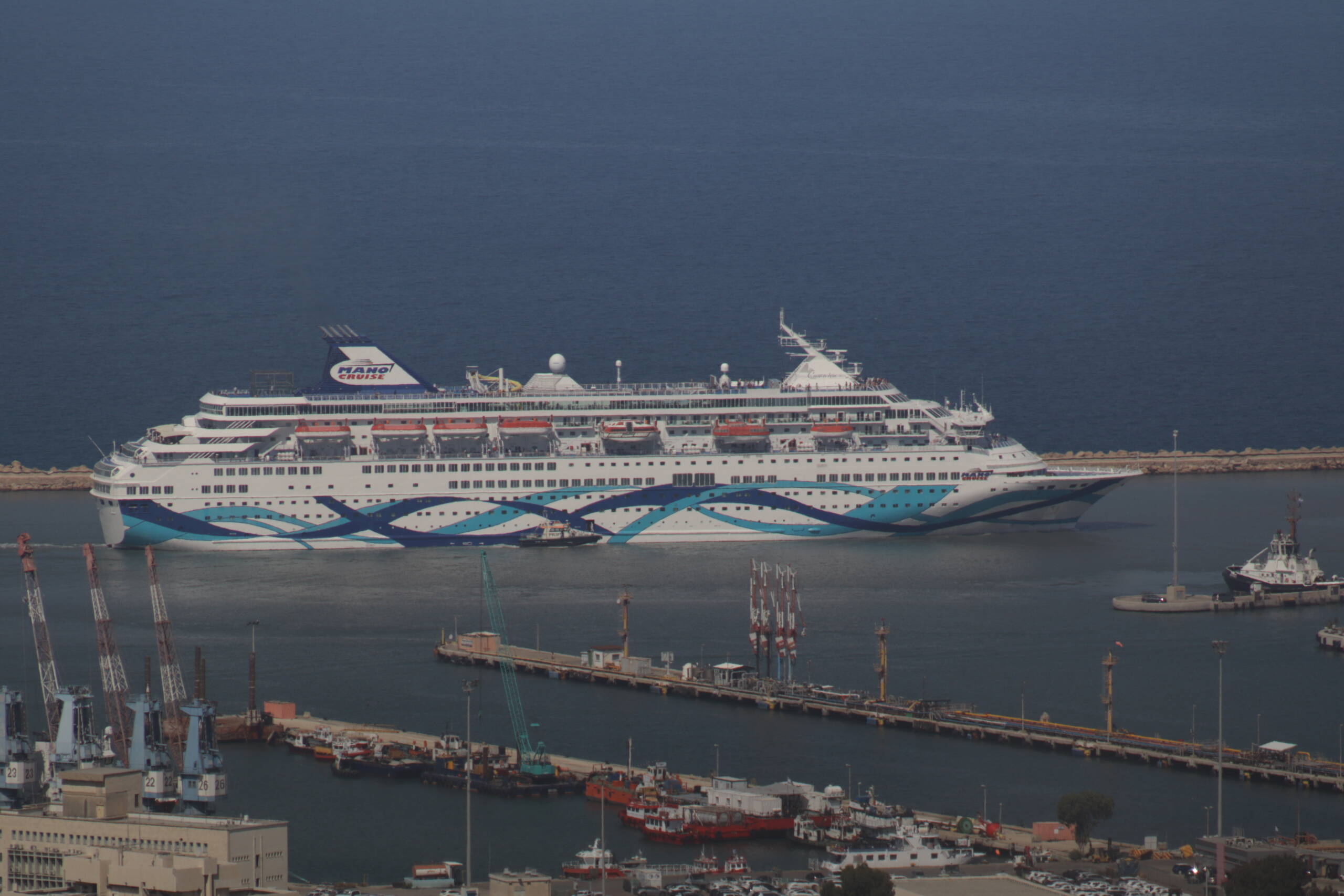There is a special kind of excitement that comes with watching a cruise ship prepare to leave port, and in Haifa that feeling is amplified by the blend of the Mediterranean’s deep blue and the city’s layered history climbing up Mount Carmel. The Crown Iris, operated by Mano Cruise, is a perfect example of this moment. Painted in bright white with sweeping turquoise and navy wave designs across its hull, the ship dominates the harbor as tugboats guide her carefully away from the docks. The Mano Cruise funnel rises high above the decks, a reminder of Israel’s own growing cruise culture, one that links the country directly to the wider Mediterranean world.

From a distance, the ship looks like a floating city. Rows of orange lifeboats line its midsection, while windows and balconies stretch along its sides like a grid of miniature viewpoints. Above, on the top deck, the distinctive white domes of its communication and navigation systems glisten in the sunlight. As it begins to edge out into open waters, the ship feels like a bridge between shore and sea, a vessel carrying not just passengers but the promise of adventure, leisure, and distant horizons.
The setting in Haifa adds to the scene’s vibrancy. The port’s industrial cranes and warehouses create a striking contrast to the elegance of the Crown Iris, as if reminding us that behind every voyage lies the rhythm of trade, labor, and daily life. Watching the ship from the Carmel slopes, you get both perspectives at once: the hard edges of a working port and the soft allure of travel. It is a reminder that every departure is also a story — for some, it is the start of a holiday; for others, just another day’s work.
Seeing the Crown Iris leave Haifa is more than a maritime event. It is a small spectacle of transition — from land to sea, from routine to discovery. It captures the thrill of standing at the edge of one world, knowing another waits just beyond the horizon.
Leave a Reply